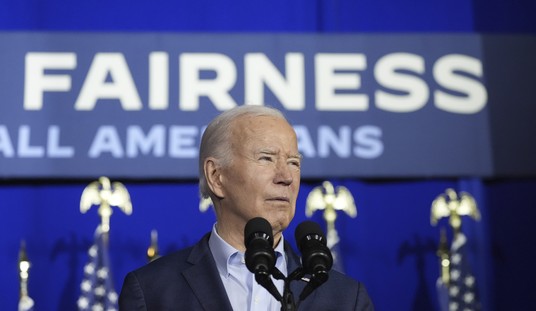13. She has discovered a close kinship with George Costanza.
Sure, she may come off all serious in her videos, but Lana Del Rey has a seriously good sense of humor. According to Rolling Stone, Lana Del Rey “has a George Costanza-like plan for the future.”
“I’m really specific about why I’m doing something or writing something,” she says. “But it always kind of gets translated in the opposite fashion. I haven’t done it yet, but I’ve learned that everything I’m going to do is going to have the opposite reaction of what I meant. So I should do the opposite if I want a good reaction.” She’s surprised to learn that George tried this approach in an episode of Seinfeld. “Oh really? That’s awesome. Me and George Costanza! Oh my God!”
12. Del Rey has so baffled her critics that she has popularized the thinkpiece.
Critics can’t figure Del Rey out. They want to love her the way anyone wants to love a beautiful woman with a gorgeous voice. They just don’t understand why she isn’t J. Lo, Lady Gaga, or Katy Perry. But she isn’t Courtney Love, either. In the end, every pop philosopher reaches the same conclusion: Why does she waste all that beauty on thinking? Their frustration highlights the stupid worldview that enthrones Kim Kardashian while arguing that little girls don’t study science and math because they’re forced to be pretty. Del Rey is a tease: “What? Girls can’t be pretty and smart, too?”
11. Lana anticipates being misunderstood.
The July 31 issue of Rolling Stone featured Del Rey in one of the most awkward cover stories ever penned. Portraying her as a borderline paranoid recluse, Brian Hiatt used the singer’s “trust no one” tattoo to frame his version of what has become the stereotypical story of the “depressed” siren. Bored with this image, she remarked:
I find that most people I meet figure I kind of want to kill myself anyway, so it comes up every time.
Obviously far more comfortable with Complex than Rolling Stone, Del Rey detailed in their cover story, published the following week:
That’s what I expect now from my career, that the music is going to be great and the reaction’s going to be f–ked up.
10. Which is fine, because she isn’t aiming for popularity.
Unlike Katy Perry, Miley Cyrus and Taylor Swift, Del Rey isn’t looking to sing to the crowd:
If they thought it was supposed to be categorized as pop music, that was the first mistake. It wasn’t made to be popular.
Before she was Lana Del Rey, she was Lizzy Grant, a coffee house-dwelling folk singer who should’ve gone the way of Tori Amos, Lisa Loeb or Sarah McLachlan. Folksingers don’t get stylized into sirens, pop singers do.
9. Del Rey doesn’t want to be worshiped, she wants to connect.
Despite her commercial success, she notes:
…I still didn’t find that community of people I was looking for, like the way Bob Dylan found his friends, or the respect of being a writer. Because that gold and platinum stuff, it doesn’t mean as much if you’re walking down the street and you can hear people saying things about you. That doesn’t even out.
Depicting the siren as a diva is simple, because pop culture has produced within us the simplistic expectation that all famous females are divas. The glamour of Lana Del Rey doesn’t eradicate the folk spirit of Lizzy Grant. If Joan Baez was a siren, would she have been equally as misunderstood? Probably, which illustrates the great disservice feminism has done to a pretty face.
8. She doesn’t jive with mainstream feminist thinking.
Regarding the reaction to her breakthrough hit Video Games:
I didn’t understand how that arose any kind of feminist commentary, because all I was saying was, “I’m so happy when you get home, and heaven is a place on earth with you. I’ve never been happier.” I didn’t understand any reason why that sounded submissive, to me. In fact, I actually thought that at such a young age, I was blessed to find someone who made me so happy. And I just didn’t understand why true love shouldn’t be the end-all, be-all. I have everything else, you know? But obviously, in other songs, it takes a different turn. And it’s just different experiences, really.
In other words, it’s fulfilling — and even fun — to be happy in love. That spirit, which flooded pop music 50 years ago, has been replaced with the feminist pursuit of instant sexual gratification. Not only does Del Rey correct the feminist assumption that the only purpose of a man is to deliver an orgasm, she defies the notion that the politics of the collective can define an individual’s experience.
7. In fact, it bores her senseless.
For me, the issue of feminism is just not an interesting concept. … Whenever people bring up feminism, I’m like, god. I’m just not really that interested. …I’m more interested in, you know, SpaceX and Tesla, what’s going to happen with our intergalactic possibilities.
Del Rey’s feminism echoes that of academic rebel Camille Paglia. Both come from Catholic roots, embrace Hollywood glam, and respect the inherent sexual power of the image — which is precisely why both have easily wiped the floor with their respective peers.
6. Because Del Rey embraces the power of sex.
Lana mocks the role of pop goddess:
It’s commentary, like, “I know what you think of me,” and I’m alluding to that. You know, I have slept with a lot of guys in the industry, but none of them helped me get my record deals. Which is annoying.
Hilariously predictable, feminists threw fits at the tongue-in-cheek comment on the fact that the “casting couch” is a two-way street. Refusing to fall into the trap of feminist misandry and victimology, Del Rey embraces her sexuality in such a blunt, romantic and appealing way that she even has the power to convert lesbians:
Lana speaks a language that I understand. She’s heterosexual, to be sure, but she’s not heteronormative. In a funny way, Lana is almost too straight to be heteronormative. She’s aggressively straight, tragically straight, sometimes even comically so. Where other female pop stars let you silently assume their heterosexuality, Lana sings like she’s marching in the straight version of a pride parade.
5. Lana’s not afraid to fall in love, either.
https://www.youtube.com/watch?v=UBpAK4Jfmng
Most Del Rey songs are about heartbreak. None of them, however graphic they may seem, could touch the pure raunch of Beyonce’s catalog. While so-called “feminist” Beyonce sings proudly about giving oral sex in the backseat and impatiently waiting at home to be serviced, Del Rey echoes Billie Holiday’s lovesick croons, injecting some much needed old-school romance into a music industry rife with graphic depictions of sex for lust’s sake.
4. She’s an informed artist.
Del Rey’s vocabulary isn’t limited to generational trend, or even to music in general. She’s named songs after Walt Whitman poems, and when communicating her vision for her latest album Ultraviolence to producer Dan Auerbach:
“I would explain things to him in terms of colors and touchstone words,” she says. “My word for the record was ‘fire,’ you know, blue fire, when a flame gets so hot it goes from red to blue. And I told him I wanted everything to sound like it was in the key of blue. And I think at first he was like, ‘What the f–k?'”
3. She digs history as something greater than a throwaway reference.
Instead of embracing trend, Del Rey uses both her music and style to question, celebrate, and simply draw attention to American cultural norms. The American flag is a prevalent backdrop in her music videos, but it isn’t simply the requisite setpiece as it is in country music. For Del Rey, the flag is a banner, a cape, a wrap, another one of her intimate love affairs, a symbol of her intense connection with and examination of American pop.
2. Her music celebrates the glamour, elegance and tragedy of mid-century American pop.
Lana’s short film Tropico begins with a truly American story of creation. After praying to John Wayne to “forgive us our sins”, Lana sings Body Electric, telling us that Marilyn Monroe is her mother, Elvis is her father, and Jesus is her best friend. Bouffant hairstyles, kohl eyeliner, and a switch-off between Revlon red and stark nude lipsticks have crafted Lana Del Rey into either the lost girl from Valley of the Dolls or a Russ Meyer pinup queen. It is a sad, saucy, sexed-up nostalgia that blows the mothballs off the hope and promise of times gone by. Describing her latest album, the critic at Complex notes:
Beyond California, Ultraviolence longs for retreat and return to Las Vegas and Detroit, a nostalgia that’s not quite pointless or for its own sake: that mid-century glory has run its course, the past is dead, love is dead, everything dies, the end.
1. Most importantly, Lana Del Rey uses criticism as an inspiration for independence and personal growth.
Heavy criticism is freeing because it leaves no route other than to be entirely yourself … There’s actually less pressure [this way] because you’re left to your own devices.
More than a pop musician, Lana Del Rey is an intense artist who demands as much thought from her audience as she puts into crafting her lyrics and style. Blowing off the critical confusion, Del Rey transcends trend, ironically making her the first true feminist music icon of the millennial generation.












Join the conversation as a VIP Member